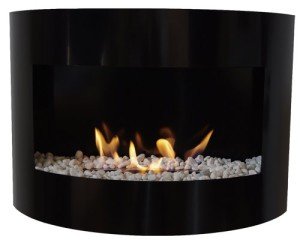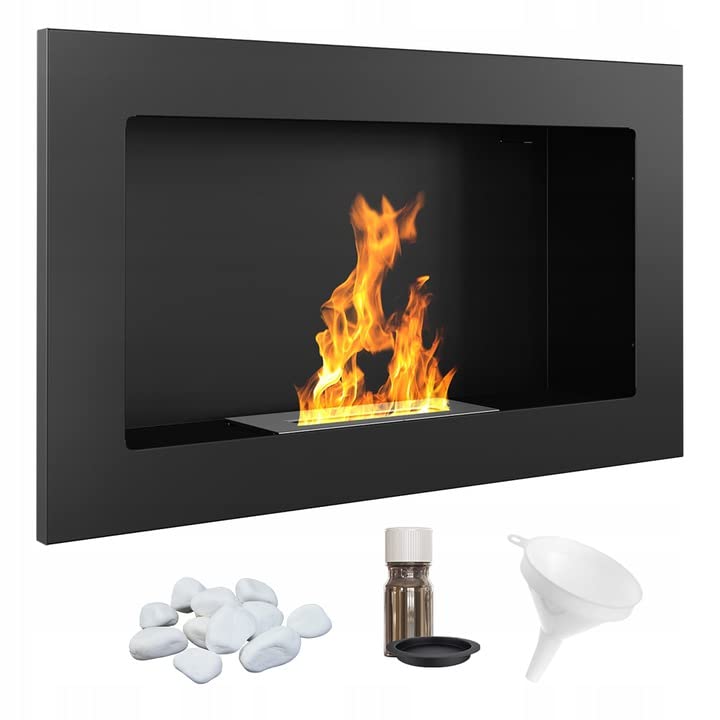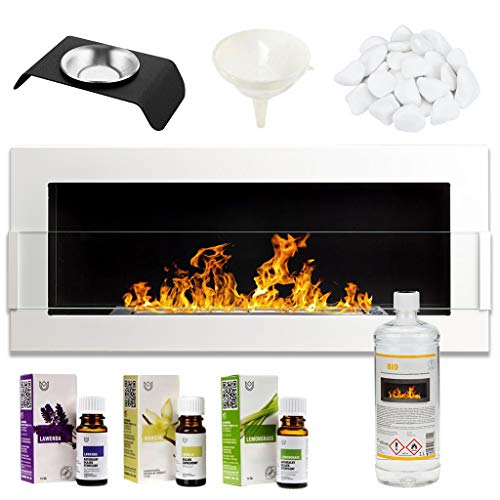In an era where sustainability and eco-friendliness are paramount, consumers are increasingly seeking alternatives that align with their environmental values. One notable innovation in this domain is the eco-friendly bioethanol wall fireplace with glass. This elegant addition to any home not only provides warmth but also serves as a modern piece of art, enhancing the atmosphere of any room.
This guide will delve into the functionality, benefits, installation, and maintenance of bioethanol wall fireplaces, along with addressing frequently asked questions to help consumers make informed decisions.
What is a Bioethanol Wall Fireplace?
A bioethanol wall fireplace is an indoor heating appliance that burns bioethanol—a sustainable fuel derived from fermented sugars found in plants. Unlike traditional fireplaces that require wood or fossil fuels, bioethanol fireplaces use this clean-burning alternative, making them an environmentally friendly choice.
Characteristics of Bioethanol Wall Fireplaces:
- Wall-mounted design: These fireplaces are hung on walls, saving floor space and enhancing the aesthetic appeal of any room.
- Glass enclosure: Many eco-friendly models incorporate glass, which provides safety while maximizing the visual impact of the flames.
- Flexible installation: They require no flue or chimney, enabling homeowners to install them in various locations without extensive construction.
Benefits of Eco-Friendly Bioethanol Wall Fireplaces
Bioethanol wall fireplaces come with an array of benefits that make them a desirable choice for modern living spaces. Here are some of the key advantages:
1. Environmentally Friendly
Bioethanol burns clean, producing minimal emissions compared to traditional fuels. Since it is derived from renewable resources, it significantly reduces one's carbon footprint.
2. Easy Installation
With no need for a vent or chimney, installation is straightforward. Homeowners can place these fireplaces in virtually any room, from living areas to bathrooms.
3. Aesthetic Appeal
The contemporary design and visible flames create a captivating focal point in any space. The glass enclosure adds elegance while allowing occupants to enjoy the visual aspect of the fire without the risks associated with open flames.
4. Versatility
Bioethanol fireplaces can function as a primary heat source or supplementary heat during colder seasons. They are customizable to fit various home designs and personal preferences.
5. Low Maintenance
Compared to traditional fireplaces, bioethanol models require minimal maintenance, with only occasional cleaning needed for the glass and burner.
Table 1: Comparison of Traditional Fireplaces vs. Bioethanol Wall Fireplaces
| Feature | Traditional Fireplace | Bioethanol Wall Fireplace |
|---|---|---|
| Fuel Source | Wood/Fossil Fuels | Bioethanol from renewable sources |
| Installation | Requires chimney and flue | Wall-mounted; no vent needed |
| Emissions | High (smoke, ash) | Low (clean-burning, no smoke) |
| Maintenance | High (smoke residue/ash removal) | Low (simple cleaning) |
| Aesthetic Appeal | Rustic or traditional | Modern and sleek |
Installation Guidelines
Installing a bioethanol wall fireplace is typically a straightforward process, but it is essential to follow the manufacturer's instructions carefully. Here is a general guide to the installation process:
Installation Steps:
- Select a Location: Identify the wall space that can safely hold the fireplace. Ensure it is positioned away from flammable materials.
- Gather Tools: Common tools include a level, drill, screws, and brackets (most kits come with these).
- Mounting Brackets: Securely install the mounting brackets according to the instructions, ensuring they are level.
- Attach the Fireplace: Align the fireplace with the brackets and securely fasten it.
- Fill the Burner: Once safely mounted, fill the burner with bioethanol, being cautious not to overfill.
- Lighting: Use a long lighter to ignite the fuel safely through the designated opening.
Important Safety Tips:
- Always read and adhere to the manufacturer's safety guidelines.
- Ensure adequate ventilation in the room where the fireplace is installed.
- Never add fuel to a burning fireplace.
Maintenance Tips
While bioethanol fireplaces are low maintenance, doing regular upkeep ensures their longevity and performance. Here are tips for maintaining bioethanol wall fireplaces:
- Clean the Glass: Use a glass cleaner and a microfiber cloth to maintain the clarity and shine of the glass.
- Check Burners: Regularly inspect the burner for any signs of wear or damage.
- Store Fuel Safely: Keep bioethanol fuel in a safe, lockable container away from direct sunlight and heat sources.
- Test for Leaks: Periodically check for leaks in the burner system to ensure safe operation.
FAQs About Eco-Friendly Bioethanol Wall Fireplaces
1. Are bioethanol fireplaces safe to use indoors?
Yes, bioethanol fireplaces are safe to use indoors as long as the manufacturer's safety guidelines are followed. They produce no smoke, ash, or soot.
2. How much heat do bioethanol fireplaces produce?
The heat output varies depending on the size and design of the fireplace. On average, a bioethanol fireplace can produce between 3 to 5 kW of heat, enough to heat a small to medium-sized room.
3. Do bioethanol fireplaces require a chimney?
No, bioethanol fireplaces do not require a chimney or venting system, making them easy to install in various locations.
4. Can I use my bioethanol fireplace during a power outage?
Yes, bioethanol fireplaces do not rely on electricity, making them an ideal heating solution during power outages.
5. How long does a tank of bioethanol last?
The burn time depends on the size of the tank and the rate of fuel consumption. Generally, a full tank can last anywhere from 4 to 6 hours.
As homeowners continue to prioritize sustainability, the eco-friendly bioethanol wall fireplace with glass stands out as an innovative and stylish heating solution. This unique appliance combines functionality with aesthetic appeal while adhering to modern environmental standards. With minimal maintenance required and a simple installation process, these fireplaces are ideal for enhancing any space while contributing to a greener future. By understanding their benefits and functionalities, consumers can make informed decisions that align with their values and lifestyle.






